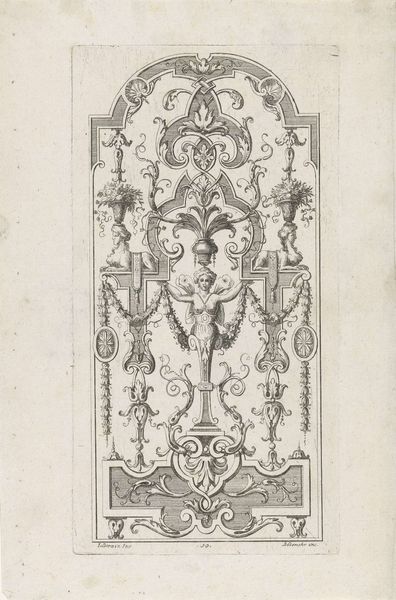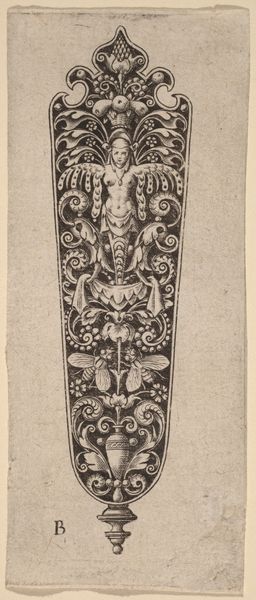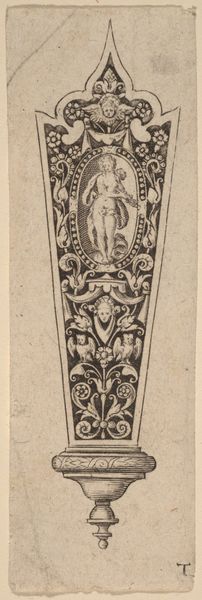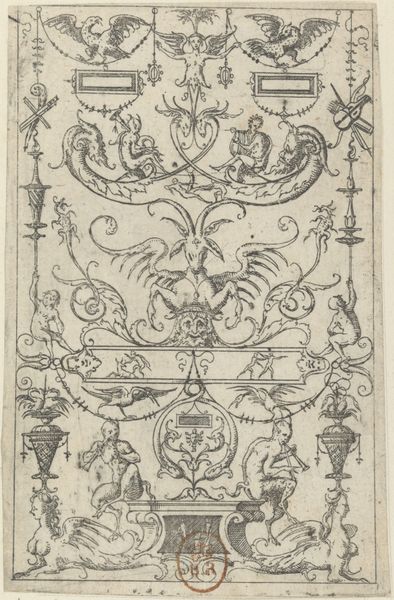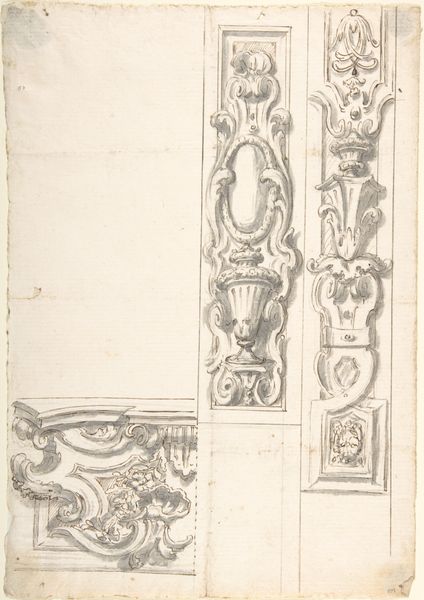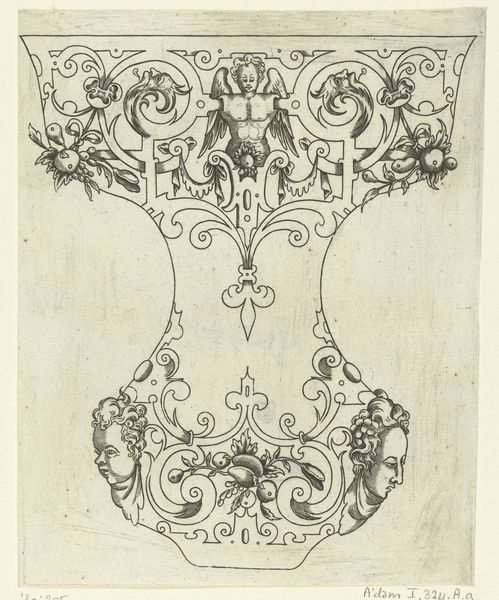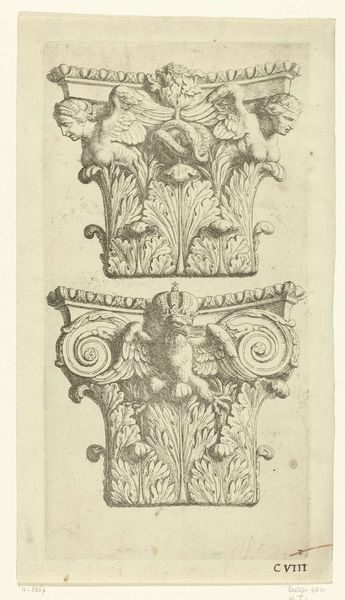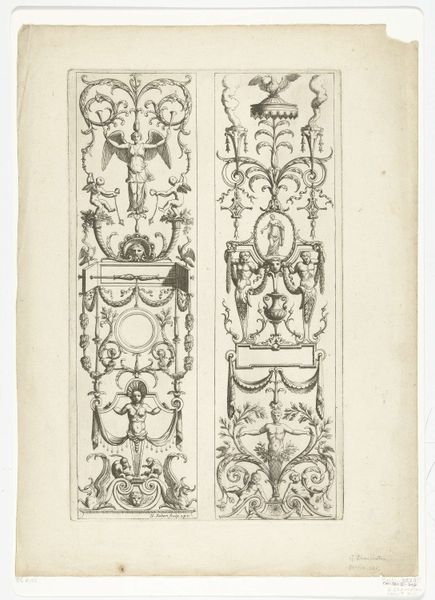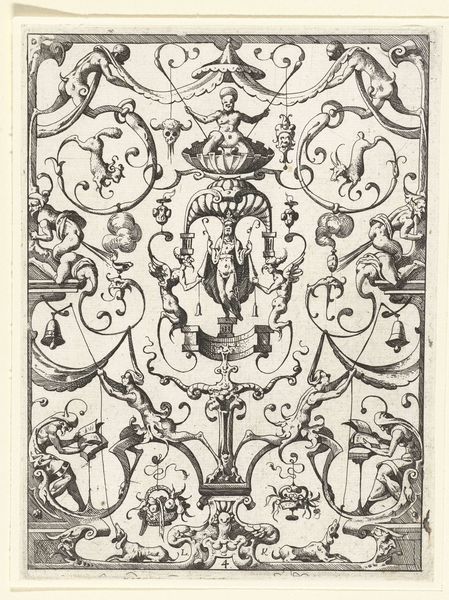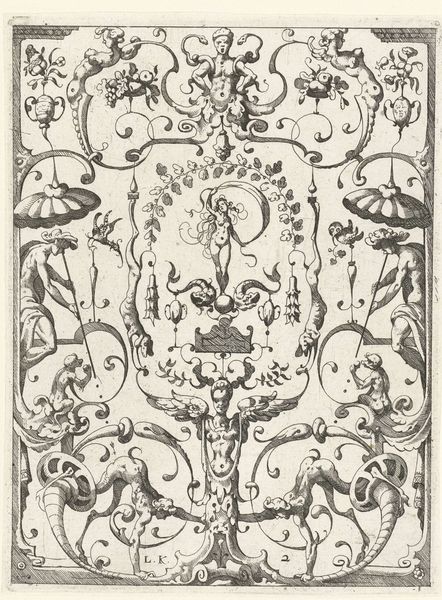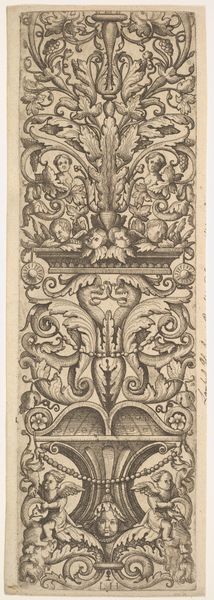
drawing, print
#
pencil drawn
#
drawing
# print
#
pen sketch
#
pencil sketch
#
charcoal drawing
#
11_renaissance
#
pencil drawing
#
geometric
#
history-painting
#
decorative-art
Dimensions: Sheet: 14 7/16 x 3 9/16 in. (36.6 x 9 cm)
Copyright: Public Domain
Curator: I am struck by the sheer density of ornamentation in this 1543 drawing, "(Design for a Dagger and Sheath)," by Augustin Hirschvogel, currently residing at the Metropolitan Museum of Art. A preparatory study, perhaps? Editor: Yes, it certainly has the appearance of a design study. My initial response is one of wondering: what did this signify? The grotesque figures feel less about elegance and more about…power? A demonstration of might? Curator: Precisely. Note the hierarchy of motifs: beginning with a crown at the hilt's apex, cascading down to various bestial forms. Each element is meticulously delineated, almost architectural in its precision. It suggests a potent symbolism, rendered with stunning control of line and form. Hirschvogel uses the visual vocabulary of power, certainly. Editor: It is hard to overlook the cultural anxieties around militarization during the mid-16th century. Consider the artist’s biography and historical context of such weaponry – what did dagger ownership communicate about masculinity and civic power in Augsburg at the time? These objects become highly gendered within the specific confines of social and economic hierarchy. Curator: You speak of social context, but consider the design independently. Look at the controlled asymmetry; how motifs echo but never precisely mirror each other. These are calculated choices designed to both delight the eye and communicate status. It seems to deliberately avoid complete symmetry, gesturing to an ideal that reflects natural imperfection, while also signaling elite artisanal knowledge. Editor: However, even such artisanal skill always exists inside cultural contexts, never divorced from it. Weaponry of this kind would never have been for 'show'. To that end, I'm fascinated by the grotesque face at the sheath's end. Does this act as some type of talisman? Protection for the weapon that simultaneously represents terror and masculine agency? Curator: Well, if one reads this object through a solely practical or activist lens, might one lose sight of its complex, intrinsic, artistic virtues? Regardless, you do prompt fascinating interpretations concerning object use and symbolic efficacy. Editor: But aren’t we both inevitably products of our contemporary perspectives looking back? Thinking critically, we also become complicit within the same cycles of re-interpreting, thereby rewriting history through the artwork itself. It certainly gives food for thought.
Comments
No comments
Be the first to comment and join the conversation on the ultimate creative platform.


